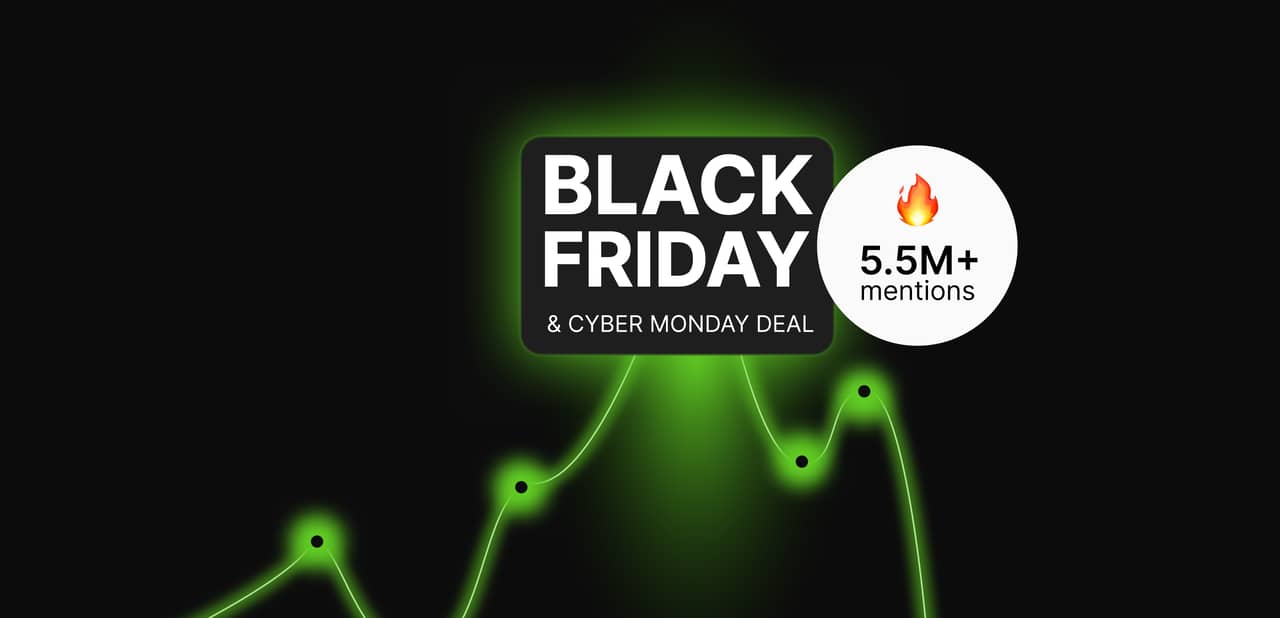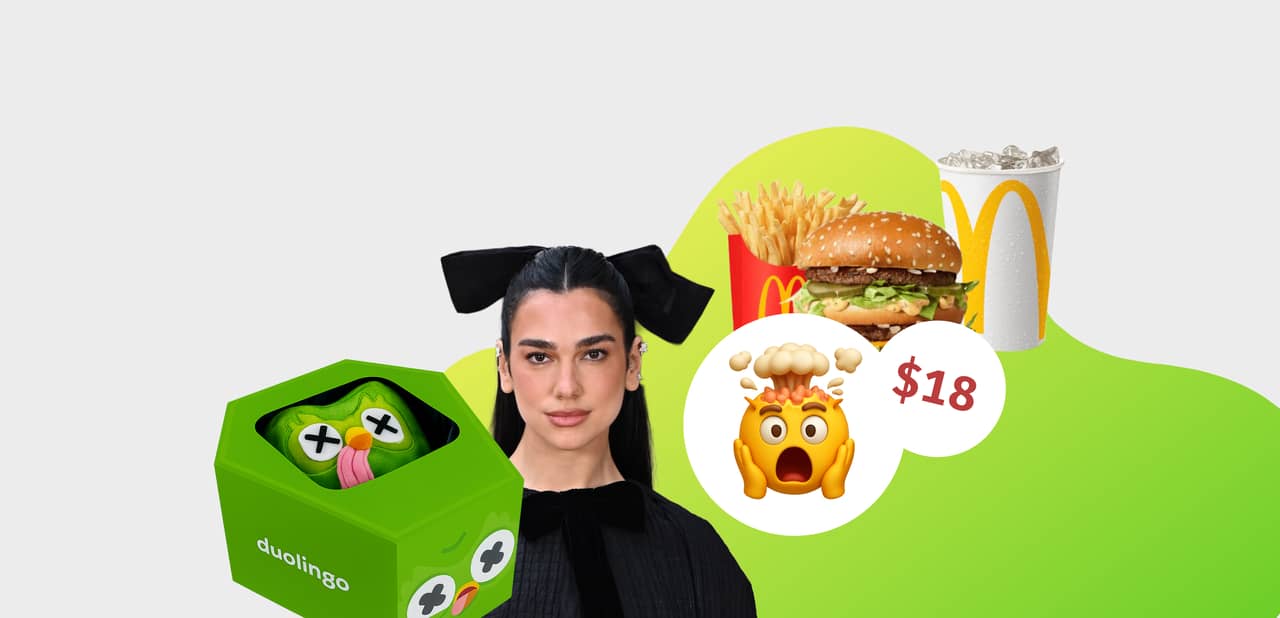Virtual Influencers: How They Work & How to Measure Impact
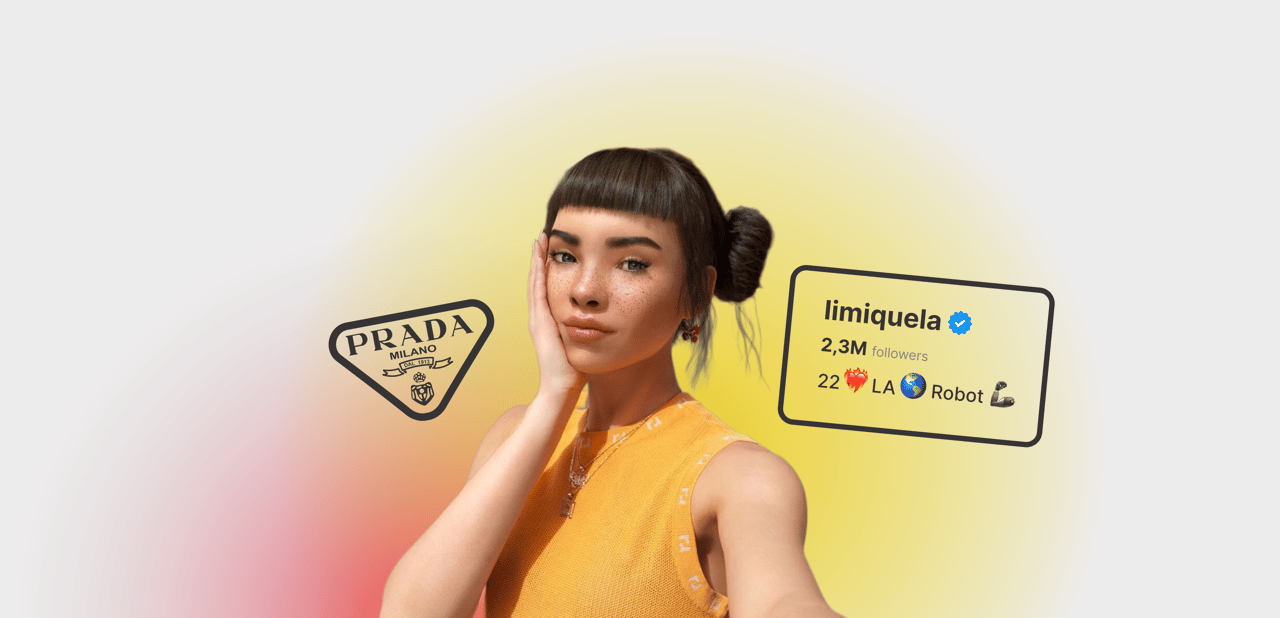
Virtual influencers have exploded into the mainstream. Research shows a 300% jump in academic studies about them since 2020.
These AI-powered digital personalities are capturing millions of followers—and plenty of brand partnerships—across social media platforms.
Major companies are investing heavily in AI creators, as their main appeal is that they can work around the clock, never age, and always stay perfectly on-message. For these reasons, learning how to work with virtual influencers and measure their impact is quickly becoming a must-have skill for modern marketers.
This guide will break down how these digital creators operate, which ones are making waves, and—most importantly—how to track their performance using smarter measurement techniques that go way beyond likes and comments.
What is a virtual influencer?
In a nutshell, virtual influencers are digital avatars designed with CGI (Computer-Generated Imagery) and AI, who act like real people on social media. They post, interact, and collaborate with brands just like any human influencer might—but they're not actually, you know, human.
What sets them apart from human influencers? For starters, AI influencers are built using 3D modeling software and powered by AI, helping them create content and even chat with followers. They don't get tired or have messy personal lives that could cause a PR headache. That’s a pretty big deal for brands.
Not all virtual influencers are created equal. There are a few main types:
• AI influencers—fully digital, often with AI-driven personalities and human-like appearance.
• CGI avatars—created for specific brands or campaigns, sometimes with less autonomy.
• VTubers—animated characters, but with real people controlling them behind the scenes (think streaming or YouTube personalities).
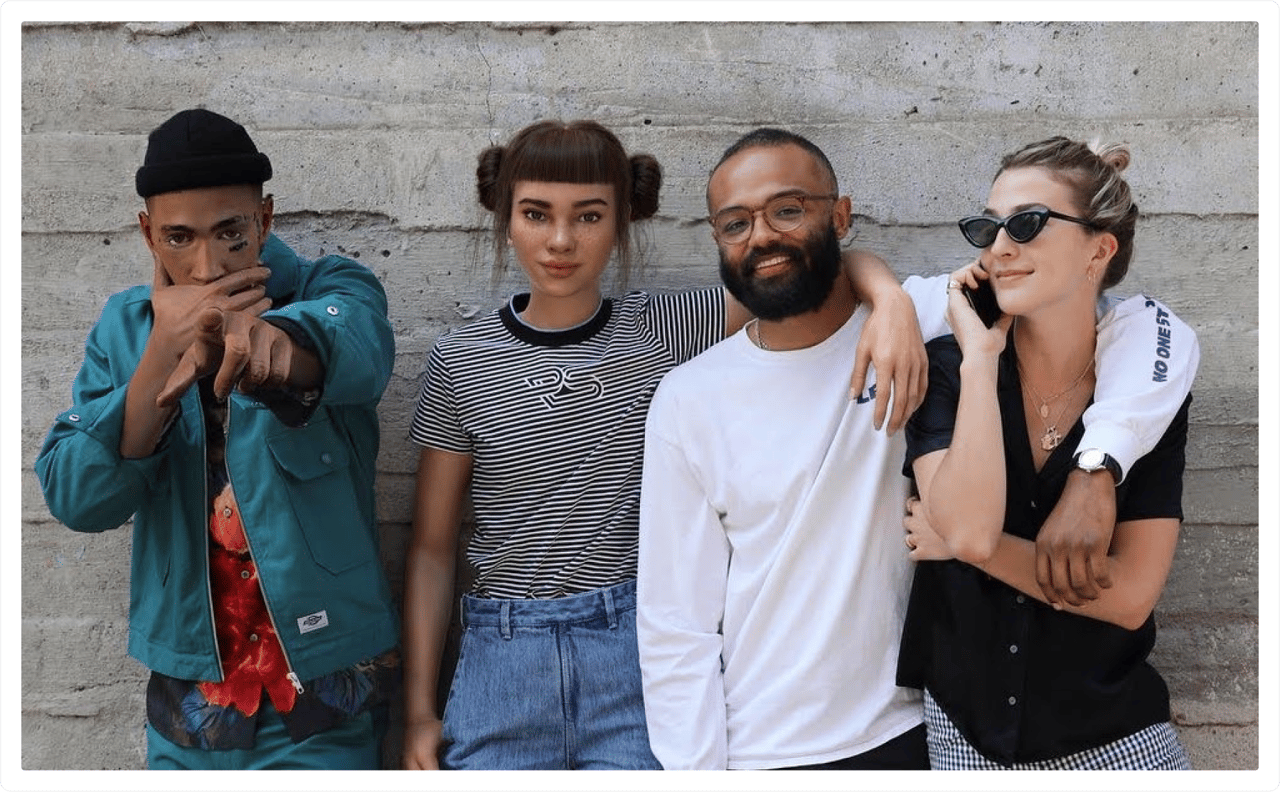

These digital folks engage people through storytelling. They share lifestyle shots, opinions, and even stir up a little drama to keep things interesting.
How computer-generated influencers are built
Creating a virtual influencer is more complicated than it looks.
First up, there’s the CGI modeling and animation. 3D artists use tools like Blender or Unreal Engine to sculpt the character’s look, movements, and facial expressions. Every detail—from freckles to wardrobe—is carefully planned.
Once the visuals are set, it’s time to build a personality. Writers and brand strategists craft the influencer’s backstory, voice, and style. Sometimes, voice actors or AI voices bring them to life with audio, while AI developers work on making their conversations and responses more believable.
Automation is also a big part of the process. AI tools can help schedule posts, generate captions, and even reply to comments in real time. All working towards the same goal—to make the virtual influencer seem like a real person who’s always online and “in the know.”
Brands love that level of control. They can fine-tune everything, from how the influencer looks to what they say and when they say it. That means fewer surprises and a lot more creative freedom.


Are virtual influencers effective for social presence?
Virtual influencers deliver strong results with 13% higher engagement than organic posts when brands use paid content strategies, according to Harvard Business Review market research.
Your marketing strategy gets better control and consistency compared to human influencers. Remember, virtual influencers can't get into scandals or make off-brand statements.
Consumer behavior studies show audiences have higher curiosity about virtual influencers. However, authenticity perceptions remain mixed across different regions. They're more popular in other countries (such as South Korea) than in the others.
As far as the age groups go, Gen Z audiences show the strongest acceptance of virtual influencer marketing. This generation grew up with virtual avatars and finds them more relatable.
Key effectiveness metrics
These four metrics are used to measure virtual influencer marketing campaigns:
• Reach: Total audience exposure across platforms
• Engagement: Likes, comments, shares, and saves
• Conversions: Direct sales and click-through rates
• Earned Media Value (EMV): Organic mentions and brand visibility
Brand success stories
Prada partnered with Lil Miquela and saw a staggering 30% higher engagement compared to their usual campaigns. This wasn’t just a gimmick—her carefully curated posts sparked real conversations and shares, especially among younger fashion industry fans who crave something different from the usual influencer fare.


In another case, Riot Games created virtual pop group K/DA to promote League of Legends, blending music, gaming, and fashion in a way that drew millions of fans and massive online buzz, along with increasing brand awareness.
Louis Vuitton collaborated with Lightning, a virtual character from Final Fantasy, for a campaign that brought in new audiences, and boosted engagement.
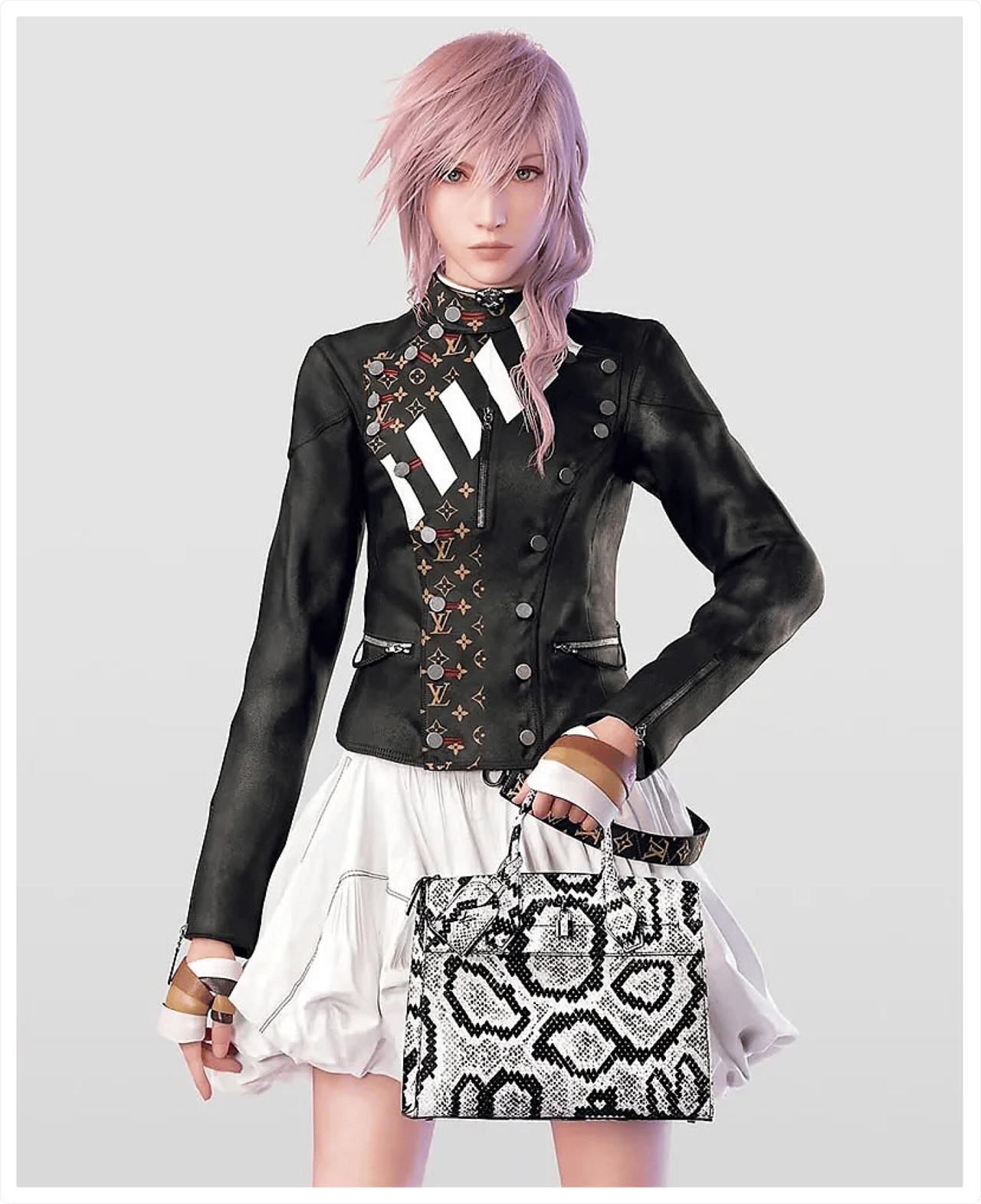

These aren’t isolated wins. Virtual influencer marketing can really work—if you do it thoughtfully and stay authentic (well, as authentic as a computer-generated imagery model can be).
Where virtual influencers work best
Fashion, beauty, luxury, gaming, tech, and entertainment industries see the strongest results. These visual-first sectors match perfectly with virtual influencer content styles.
Above-mentioned Louis Vuitton's virtual ambassador campaign increased social media engagement by 45% compared to previous human influencer partnerships. The brand reached new audiences and boosted its Instagram following without traditional celebrity costs.
Top virtual influencers to know
The most popular virtual influencers are computer-generated personalities with millions of followers who collaborate with major brands like Prada, Samsung, and Calvin Klein across diverse markets and cultures.
Lu do Magalu leads as the world's most-followed virtual influencer with 14 million Facebook followers. Created by Magazine Luiza's CEO, she's Brazil's top digital brand ambassador promoting tech products and lifestyle content.
Lil Miquela remains the iconic CGI persona with 2.5 million Instagram followers. This digital supermodel has worked with Prada, Dior, and Calvin Klein while releasing her own music singles.
imma brings Japanese culture to virtual influence with her signature pink bob hairstyle. She focuses on Asian market collaborations and fashion partnerships across digital platforms.
Noonoouri stands out as a fashion-focused AI character who made history by signing a record deal with Warner Music. Her animated style appeals to luxury brand partnerships.
Guggimon represents Superplastic's surreal character design with 1.3 million Instagram followers. This horror-themed bunny has crossed into gaming through Fortnite collaborations.
Any Malu dominates Brazilian entertainment as a fully animated virtual influencer. She had her own TV show on Cartoon Network and promotes games like Valorant.
Nobody Sausage creates comedic short-form videos that have gained popularity across TikTok and Instagram. His 3D character design focuses on humor-driven content.
Barbie leverages decades of brand recognition with 12.4 million YouTube subscribers. She promotes inclusivity through social causes and lifestyle vlogs.
Risks, ethics, and compliance for brand safety
Virtual influencers raise unique ethical challenges that brands must navigate carefully. Unlike human influencers, AI creators are entirely controlled by companies, creating risks around authenticity and consumer trust.
Disclosure Requirements
The FTC and ASA require clear disclosure when virtual influencers promote products. You must label sponsored content just like with human creators. Failure to disclose can result in fines and damaged brand reputation.
Representation and bias issues
Virtual model influencers can perpetuate harmful stereotypes or exclude diverse audiences. Creative agencies often design AI creators with specific appearances that may promote unrealistic beauty standards. This creates backlash risks when audiences notice a lack of authentic representation.
Data and ownership concerns
Training AI models raises questions about data sources and consent. You need to ensure your virtual influencer's training data was ethically obtained. Creative control becomes complex when multiple parties are involved in development.
Reputational risks
The "uncanny valley" effect can make audiences uncomfortable with overly realistic virtual humans. Some consumers view AI creators as deceptive compared to human influencers. Brand safety becomes critical when virtual personas behave unexpectedly.
Monitoring and response
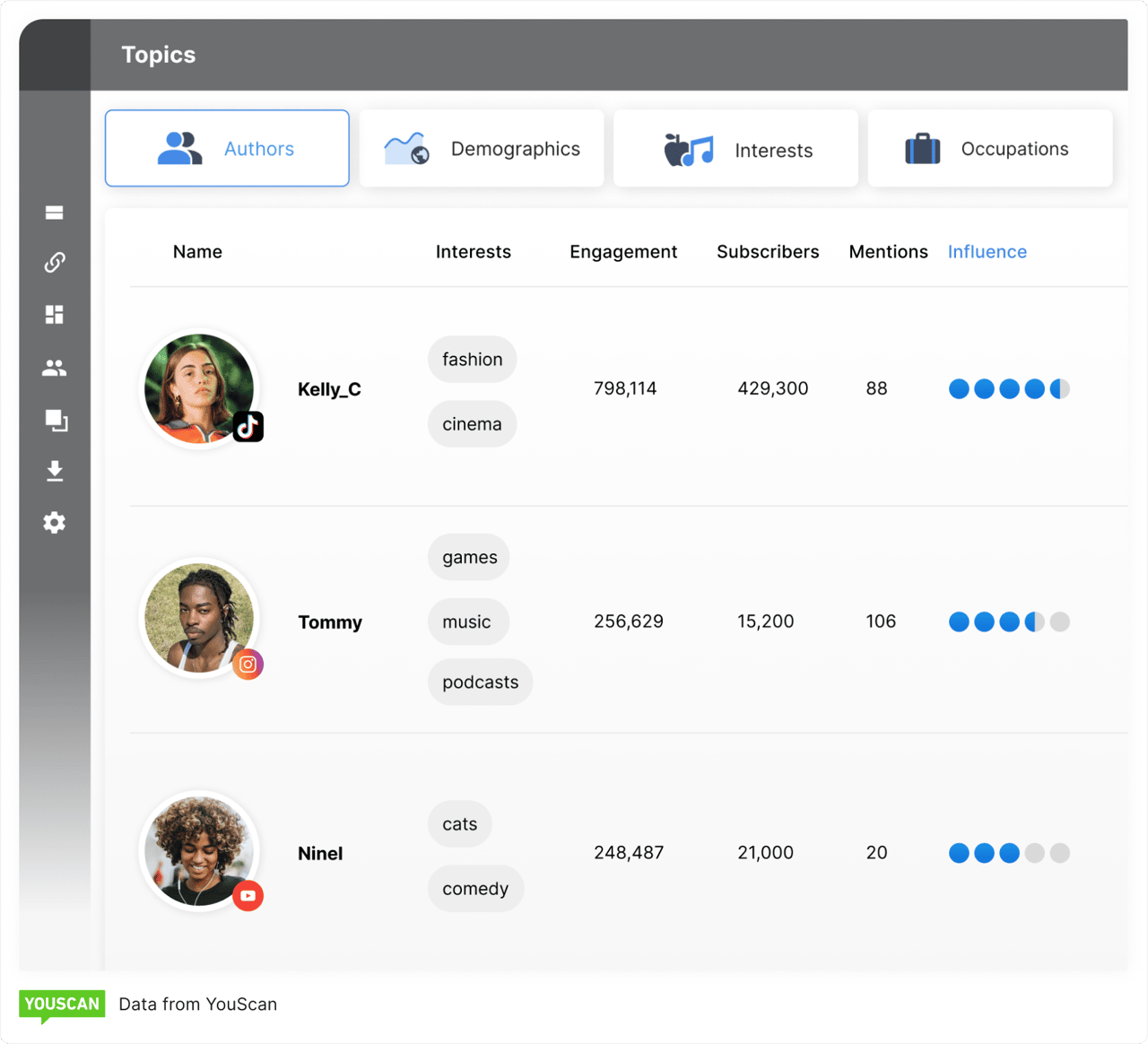

Real-time sentiment monitoring helps you catch negative reactions early. Tools like YouScan can detect audience backlash before it spreads. You can track brand mentions, sentiment spikes, and feedback across platforms to adjust your virtual influencer strategy quickly. This gives you more control over the reception of the campaign.


How to measure virtual influencer impact with visual listening
Traditional analytics miss up on a lot of brand mentions because they only track text. Visual listening with tools like YouScan captures the complete picture by detecting logos, products, and brand appearances in images and videos that aren't tagged or mentioned in captions.
Why visual listening matters for virtual influencers
Virtual influencers often display products without always tagging brands. Your marketing campaigns might miss crucial data from Instagram followers who see brand partnerships in photos but don't engage with text.
Key metrics you can track:
• Share of voice - Combined visual and text mentions across platforms
• Sentiment tracking - Emotional responses to visual brand content
• Brand exposure - Logo visibility and product placement frequency
• Engagement patterns - How visual mentions drive interactions
Your ability to create content strategies improves when you see the full scope of how virtual influencers display your products visually across different social media platforms.
Market outlook and trends
The virtual influencer market will grow from $6.06 billion in 2024 to $45.88 billion by 2030. That’s a staggering 40.8% annual growth rate.
North America leads the market with over 42% market share. Asia Pacific’s not far behind, showing the fastest growth at 44% annually. Fashion industry brands are driving the largest segment—no surprise there, since visuals are everything in that world.
Luxury fashion brands are turning to virtual influencers for cost-effective campaigns. You get to skip travel, hotels, and scheduling headaches—and still keep your message tight.
In the digital world, these trends are popping up everywhere. Hyper-personalized AI avatars are adapting to individual user preferences in real time. Voice and emotion simulation is making interactions feel way more natural, sometimes uncannily so. To track these changes, you can use trend analysis tools to stay on top of them.
Established companies are introducing virtual influencers into metaverse experiences and e-commerce. That means shopping and entertainment are blending together in weirdly fun ways.
Luxury brands especially love the precision and reliability. No more worrying about unpredictable humans going off-script.
CGI and AI just keep getting better, so these digital personalities are only going to get more lifelike and emotionally responsive. But as AI gets more creative, brands will need smarter tools to figure out what’s actually working—and what’s just hype.
Conclusion
Virtual influencers have grown from digital experiments to powerful marketing tools that reshape how brands connect with audiences. They offer unique advantages like complete control and 24/7 availability.
However, they also bring new challenges. Measuring their true impact requires advanced tools that go beyond basic metrics.
Key insights from virtual influencer marketing:
• Virtual personas can drive real engagement and sales
• Traditional measurement methods miss important visual data
• AI-powered brand analytics reveal deeper consumer insights
• Both human and virtual influencers need comprehensive tracking
Visual performance measurement is now critical for success. You need tools that can analyze images, videos, and social interactions across all platforms.
The future of influencer marketing depends on accurate measurement and deep insights. Virtual influencers will continue growing, but success requires the right analytics approach.
Ready to improve your influencer measurement strategy? See how YouScan helps brands measure influencer impact and uncover hidden brand mentions. Request a demo today.
FAQ
What do virtual influencers do?
Virtual influencers, in a nutshell, act a lot like human creators on social media. They post glossy photos, share snippets of their “lives,” and sometimes even get a little chatty in the comments.
You'll see them collaborating with brands, launching new products, and occasionally stirring up drama or conversation, just like any influencer would. The wild part? They're not real people—these are digital personalities crafted by teams using AI, CGI, and a hefty dose of imagination.
Are virtual influencers effective compared to human creators?
Virtual influencers bring something different to the table: absolute brand control and a steady, unchanging image. That said, people are still figuring out how they feel about it—just 23% of folks are comfortable with AI influencers, while 46% admit it makes them uneasy.
Whether they're a good fit really depends on who you're trying to reach and what you're hoping to achieve. There's no one-size-fits-all answer here.
Who are the most popular virtual influencers in 2026?
A few big names keep popping up:
Lil Miquela – With 2.4 million Instagram followers, she's landed deals with Prada and Calvin Klein.
Imma – Sporting 388k followers, she's turned heads in Coach campaigns alongside real-life celebrities.
Janky – Nearly a million followers, plus collaborations with Gucci and Fortnite under his belt.
How do brands collaborate with virtual influencers?
Working with virtual influencers isn’t all that different from teaming up with human ones. You’ll usually go through their management or the creative team behind them, hammer out the details, and sign off on campaign content.
It’s smart to vet these digital personalities like you would any creator, and be upfront with audiences by using tags like #PoweredByAI. Keeping an eye on how people are responding during your campaign is a good idea, too.


